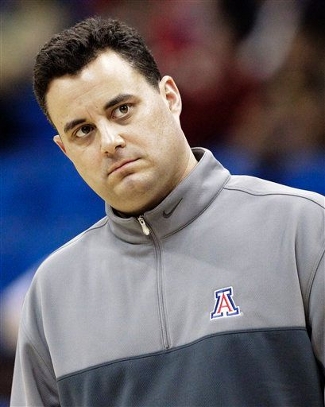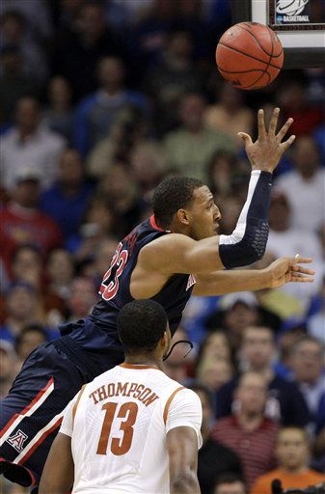[5] Arizona Wildcats (28-7) vs. [4] Texas Longhorns (28-7)
BOK Center | Tulsa, OK | Tip: 5:10 P.M. CT | TV: TNT
LRT Consecutive Game #186
The Texas Longhorns survived a scare on Friday to advance past Oakland in the second round of the NCAA tournament, but things won’t be any easier today. Their third-round match-up is a tough Arizona Wildcat team that won the Pac 10 regular-season title and lost in overtime in the championship of the post-season tournament.
A win would put the Longhorns through to the Sweet 16, a place they have been only once since 2005. In the first half of the decade, Texas was in elite company with Duke, West Virginia, and Pitt as the most frequent guests of the NCAA’s second weekend, but that now seems like a distant memory. The Longhorns will have to beat a formidable opponent this evening if they want to once again join that prestigious club.

Coach Sean Miller has his sights set on the Sweet 16
(Photo credit: Charlie Riedel/Associated Press) 
MoMo Jones is the king of acrobatic finishes inside
(Photo credit: Ronald Martinez/Getty Images) 
Derrick Williams will be a match-up problem for Texas
(Photo credit: Associated Press) |














